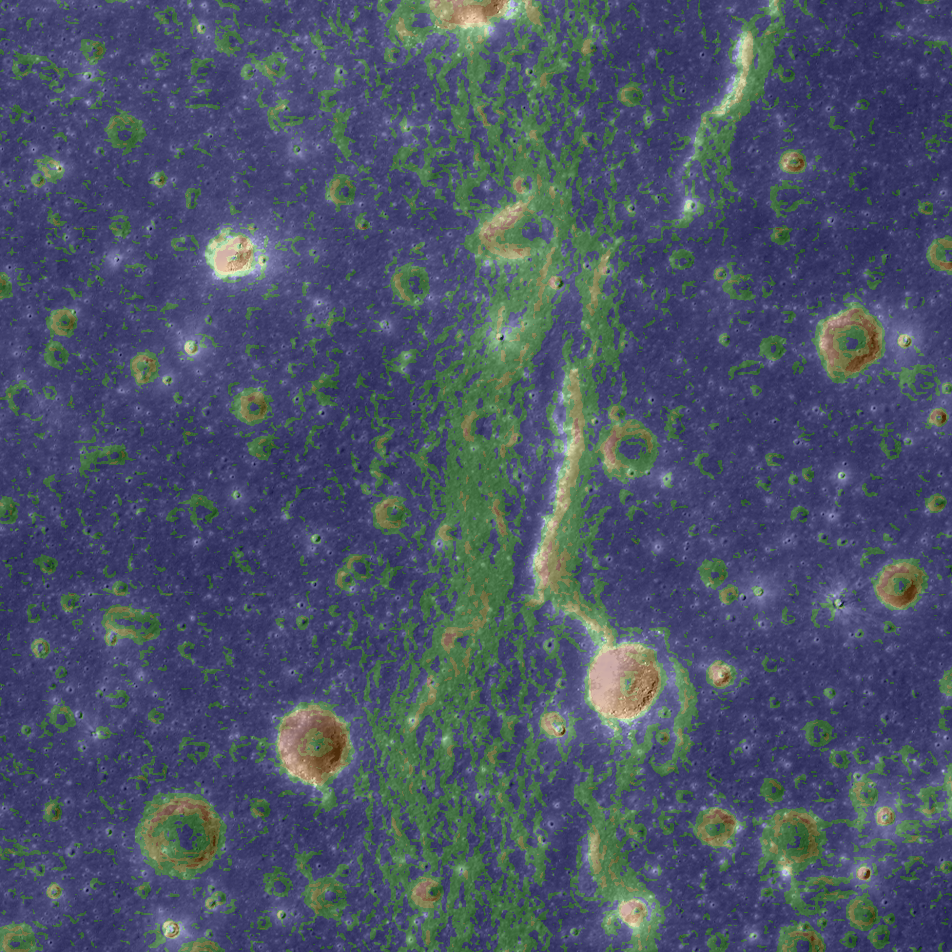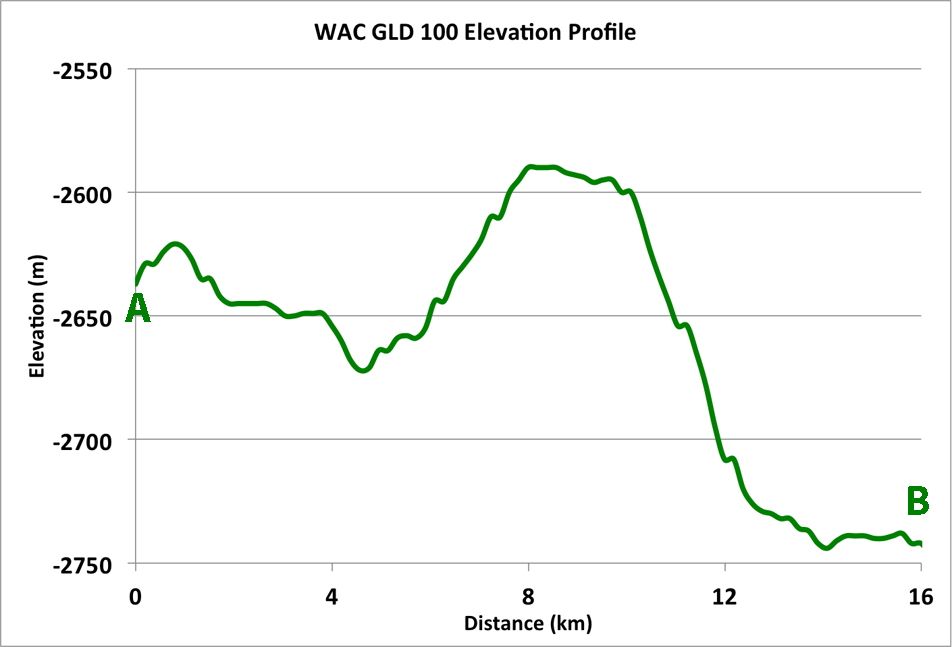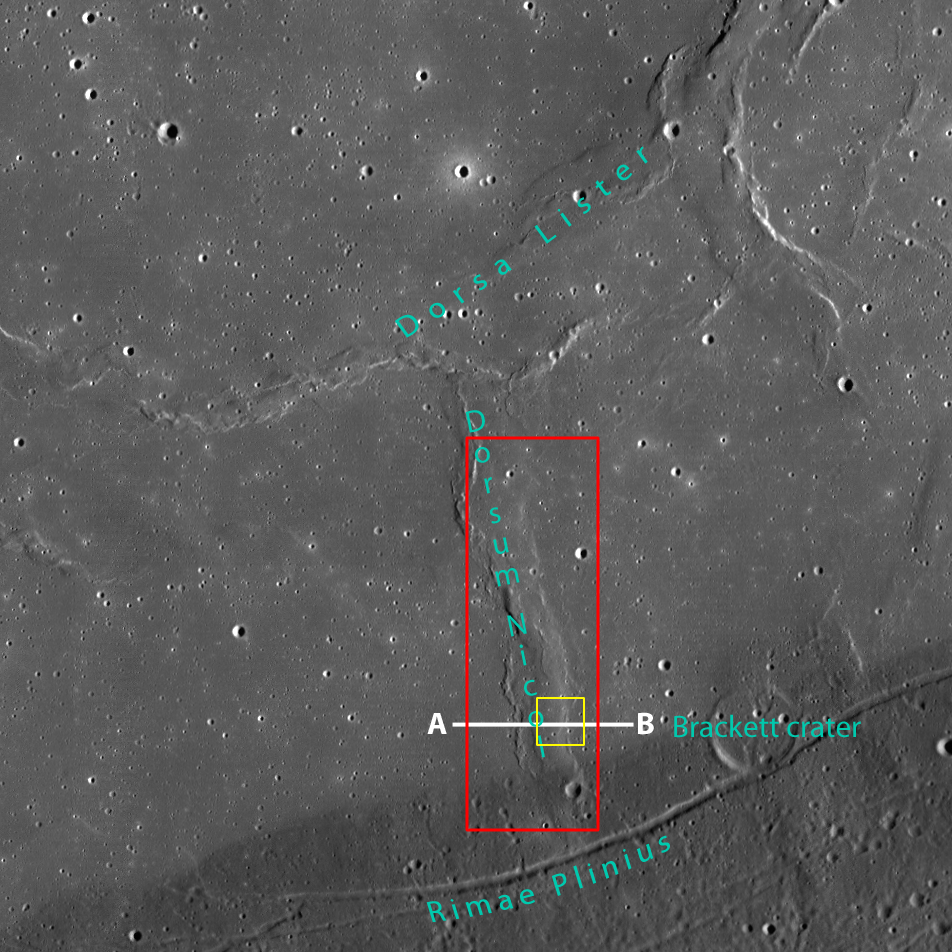
Dorsum Nicol is a wrinkle ridge found in southern Mare Serenitatis. The opening Featured Image is an LROC NAC image overlaid with a slope map of the region, with warmer colors representing steeper slopes. Slope maps are useful to planetary scientists because topographic features like craters and small ridges really stand out. At the Featured Image location, the mare on the west side of the ridge is ~100 m higher in elevation than the mare on east side of the wrinkle ridge, and the peak of the ridge is ~50 m above that (see profile below).

The difference in elevation between the eastern and western flanks of the ridge could be due to the lunar crust buckling and folding beneath the surface, or it could be from mare fill after the wrinkle ridge was formed. Dorsum Nicol has a width of 10 km at its widest, and 5 km at its narrowest. Take a look at the full feature in the context image below.

Wrinkle ridges are are surface expressions of compressional forces being released; they are seen in all large maria on the Moon. The loading from the massive flood basalts during mare volcanism could have caused the lithosphere to flex, because the density of the flood basalts is higher than the anothositic highlands material. Buoyancy forces were at work here, causing viscoelastic relaxation and inducing forces in the mare rock.
These forces caused the once convex surface of the maria to become more planar as time went on. This is a problem because a plane has less area than a curved surface when they are bounded by the same radius. Where was the rock going to go? Well, the maria resisted this change in topology until something broke! Wrinkle ridges are the expression of that thrust fault behavior.
Check out the full NAC frame below, or download the DTM from our product page!
Related Posts:
Wrinkle ridges of northwest Mare Imbrium.
Published by Aaron Boyd on 17 July 2014